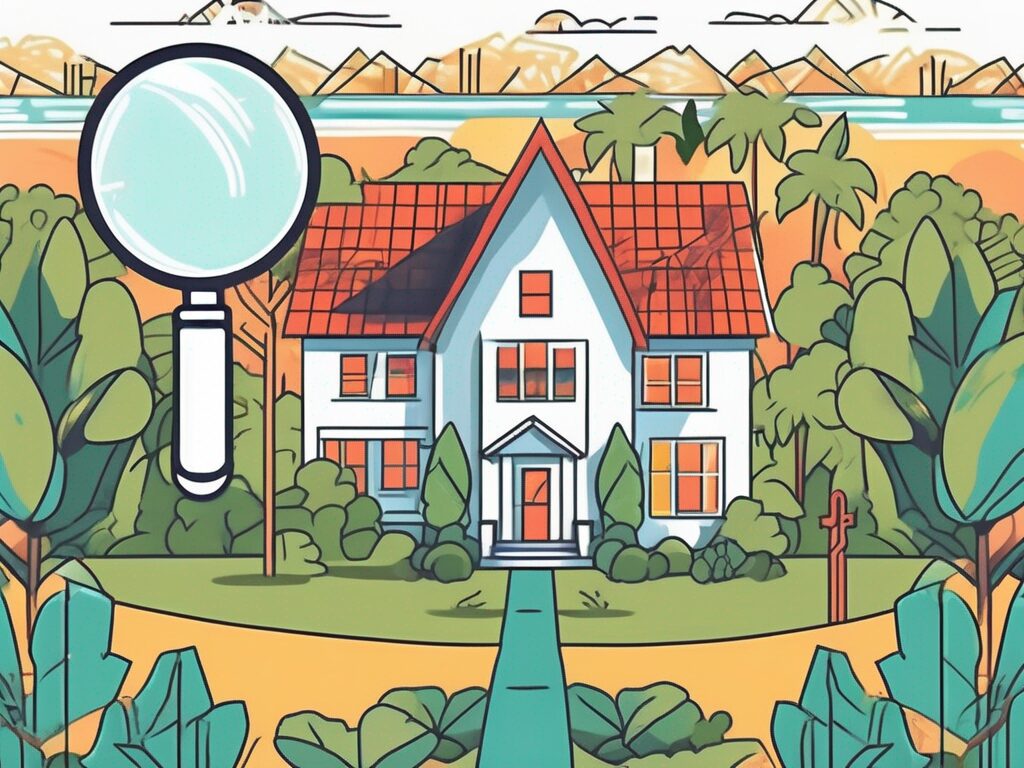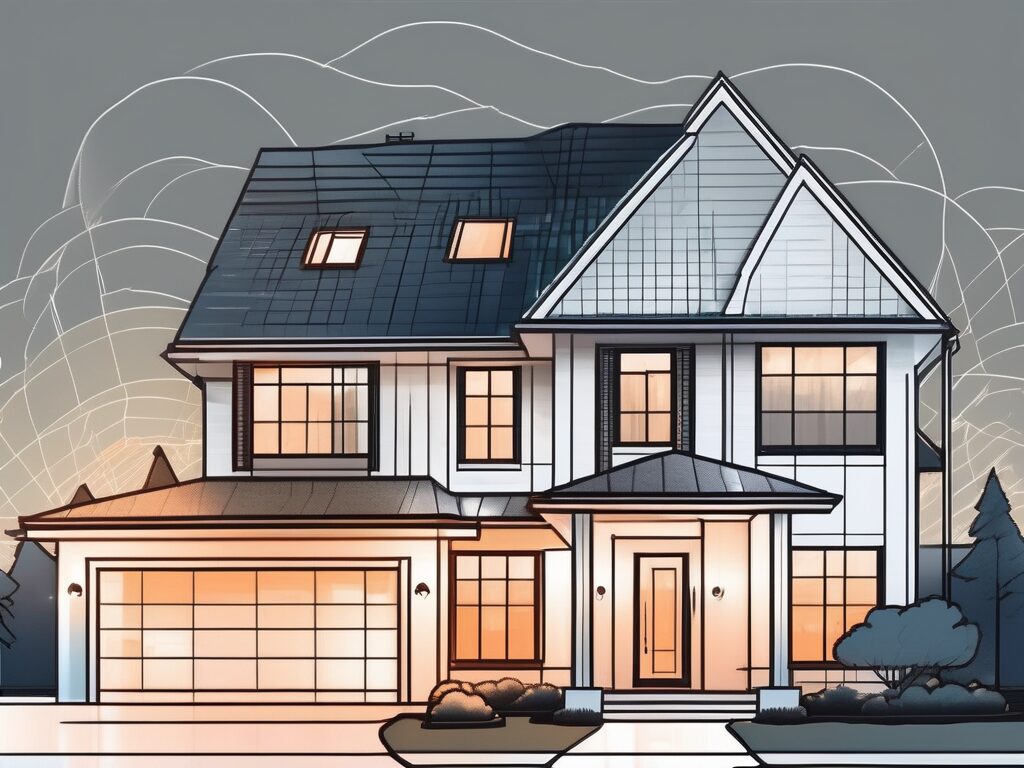
Agent A-Team or Solo Superhero? Finding the Right Real Estate Partner for Your Selling Journey in Wildwood Florida
When it comes to selling your home in Wildwood, Florida,…
January 29, 2024
A roof is not just a functional aspect of a home; it is also an essential component that contributes to the overall value of a property. Over time, roofing materials and styles have evolved, impacting both the aesthetic appeal and monetary worth of homes. In this article, we will delve into the journey of roofing evolution, analyze the costs associated with a new roof, and explore the significant impact a roof upgrade can have on your property’s value. Additionally, we will provide you with valuable insights to help you make informed decisions when selling your home and offer expert tips to maximize the return on your roof investment. So, let’s embark on this insightful exploration of the connection between the evolution of roofing and your home’s value.
Roofing has come a long way from its humble beginnings, with ancient civilizations primarily using thatch as their primary roofing material. Initially, thatch provided protection against the elements, but it had its limitations, such as susceptibility to decay and fire hazards. As societies advanced, so did their roofing styles and materials.
Let’s dive deeper into the fascinating journey of roofing evolution and explore the various styles and materials that have shaped the way we protect our homes.
The introduction of clay tiles revolutionized roofing, offering improved durability and fire resistance. This new style not only enhanced the functionality of roofs but also added a touch of elegance. The use of clay tiles can be traced back to ancient civilizations like the Greeks and Romans, who recognized the benefits of this material.
As time went on, different regions developed their unique roofing styles. For example, in Europe, the use of slate became popular due to its abundance and durability. The distinctive appearance of slate roofs added a sense of grandeur to castles, churches, and other significant structures.
With advancements in technology and architectural innovations, other materials like metal and asphalt shingles emerged, further expanding the possibilities for roof design. Metal roofs, known for their longevity and energy efficiency, gained popularity in industrial and commercial buildings. Meanwhile, asphalt shingles became a popular choice for residential roofing due to their affordability and versatility.
Roofing materials not only evolved in terms of durability and functionality but also in terms of environmental impact. The rise of eco-consciousness led to the development of green roofing options. These roofs incorporate vegetation, providing insulation, reducing stormwater runoff, and improving air quality.
Furthermore, the evolution of roofs goes beyond just the materials used. Roofing styles have also been influenced by architectural trends throughout history. For instance, the Gothic architecture of the Middle Ages featured steeply pitched roofs with intricate details, reflecting the grandeur and spirituality of the time.
In modern times, contemporary architectural styles have embraced flat roofs, which offer a sleek and minimalist aesthetic. These roofs often incorporate sustainable materials and innovative design elements to create visually striking and energy-efficient structures.
As we look to the future, the evolution of roofs continues. With advancements in technology and a growing focus on sustainability, we can expect to see even more innovative materials and designs that push the boundaries of what roofs can do.
Considering a roof replacement or upgrade involves understanding the financial implications associated with such a project. Many factors influence the cost of a new roof, and it’s crucial to be aware of them before making any decisions.
When it comes to the price of a roof replacement, several factors come into play. One of the primary considerations is the size of your roof. The larger the roof, the more materials and labor will be required, which can significantly impact the overall cost. Additionally, the selected materials play a significant role in determining the price. Different roofing materials have varying costs, with some being more expensive than others. The complexity of the design is another factor to consider. If your roof has intricate architectural features or unique shapes, it may require more time and effort to install, resulting in higher costs.
Another crucial factor that influences the price of a roof replacement is the overall condition of the existing roof. If your current roof has significant damage or structural issues, it may require additional repairs before the replacement can take place. These repairs can add to the overall cost of the project.
Aside from the materials and the condition of the roof, labor costs are also a significant consideration. The complexity of the project and the time required to complete it will affect the labor costs. Additionally, obtaining the necessary permits for the roof replacement may also incur additional expenses.
It’s important to note that unexpected repairs or issues that arise during the roof replacement process can also impact the final cost. For example, if the roofing contractors discover hidden damage or structural issues while removing the old roof, they may need to make additional repairs, which can increase the overall price.
When planning for a new roof, it’s essential to consider all these factors and consult with roofing professionals to get accurate estimates. By understanding the various elements that influence the cost, you can make informed decisions and ensure that you are financially prepared for the project.
The size of your roof, the selected materials, the complexity of the design, and the overall condition of the existing roof are all significant factors that affect the price of a roof replacement. Other considerations include labor costs, permits, and any additional repairs that may be required during the process.
Beyond the aesthetic appeal and protection a new roof provides, it also has a substantial impact on your home’s value. Investing in a high-quality roof upgrade can significantly boost your property’s worth and attract potential buyers.
When it comes to selling a house, first impressions matter. A new roof is a strong selling point for prospective buyers due to the security and peace of mind it offers. Knowing that they won’t have to worry about leaks or costly repairs in the near future can be a major selling point. In addition to improving curb appeal, a well-maintained roof enhances the overall structural integrity of the property, which can lead to higher valuations during the home appraisal process.
Moreover, newer roofing materials, such as energy-efficient options like solar panels or cool roofs, can reduce utility costs, making your home more attractive to eco-conscious buyers. Imagine the appeal of a home with solar panels that generate clean, renewable energy and significantly lower electricity bills. The cost savings associated with these sustainable features can add value to your property and create a competitive edge in the real estate market.
Another factor to consider is the longevity of a new roof. Many modern roofing materials are designed to last for several decades, which means that a new roof can provide long-term value to homeowners. Buyers are often willing to pay a premium for a home with a newer roof, as they understand that it will save them money on future repairs and replacements.
Furthermore, a new roof can also have a positive impact on the overall energy efficiency of your home. Proper insulation and ventilation, which are often addressed during a roof replacement, can help regulate indoor temperatures and reduce the need for excessive heating or cooling. This not only saves money for the homeowner but also appeals to buyers who are looking for energy-efficient properties.
It’s important to note that the impact of a new roof on home value can vary depending on factors such as the local real estate market, the quality of the roof installation, and the specific features of the roof. Consulting with a professional real estate agent or appraiser can provide valuable insights into the potential value increase that a new roof can bring to your property.
When contemplating selling your home, it’s essential to evaluate the condition of your roof and consider potential buyers’ expectations. In some cases, a roof replacement may be necessary to attract serious offers and expedite the selling process.
One important factor to consider when deciding whether to replace your roof is the overall condition of the existing roof. If your roof is showing signs of significant wear and tear, such as missing shingles, leaks, or sagging areas, it may be a red flag for potential buyers. A damaged roof can raise concerns about the overall structural integrity of the home and may deter buyers from making an offer.
Additionally, market trends in your area can play a significant role in determining whether a roof replacement is necessary. If the majority of homes in your neighborhood have newer roofs, potential buyers may expect the same level of quality and may be less inclined to consider a home with an outdated or deteriorating roof. On the other hand, if most homes in your area have older roofs, a roof replacement may not be as critical for attracting buyers.
Before deciding whether to replace your roof, consult with a trusted roofing professional to assess its condition and consider market trends in your area. They can provide valuable insights into the current roofing standards and buyer preferences. A roofing professional will be able to identify any potential issues with your roof and advise you on whether a replacement is necessary.
Investing in a new roof can have several benefits when selling your home. A new roof can enhance the overall curb appeal of your property, making it more attractive to potential buyers. It can also provide peace of mind to buyers, knowing that they won’t have to worry about costly roof repairs or replacements in the near future.
Furthermore, a new roof can increase the value of your home and potentially yield a higher return on your investment. Many homebuyers are willing to pay a premium for a property with a new roof, as it eliminates the need for immediate repairs and provides added protection against the elements.
However, it’s important to consider the cost of a roof replacement and weigh it against the potential benefits. Roof replacements can be a significant expense, and it’s crucial to determine whether the investment will be recouped through a higher sale price or a faster selling process. Consulting with a real estate agent can help you understand the market dynamics and determine the potential impact of a new roof on your home’s value.
In conclusion, when selling your home, evaluating the condition of your roof and considering potential buyers’ expectations is crucial. While a roof replacement may not always be necessary, it can significantly enhance the marketability and value of your property. Consulting with roofing professionals and real estate agents can provide valuable guidance in making the right decision for your home sale.
Now that we’ve discussed the impact a new roof can have on your property’s value, let’s delve into some expert tips to help you maximize the return on your roof investment:
When it comes to selecting materials for your new roof, it’s crucial to choose high-quality options that not only provide durability but also complement the overall architecture of your home. Consider consulting with a professional roofer or an architect to ensure that the materials you choose enhance the aesthetic appeal of your property while also offering long-lasting performance.
In today’s environmentally conscious world, energy efficiency is a key consideration for many homebuyers. By opting for energy-efficient roofing materials, such as solar panels or reflective coatings, you can not only reduce your carbon footprint but also attract potential buyers who prioritize sustainability. These energy-efficient options can significantly enhance the value of your property and provide long-term savings on energy bills.
Maintaining your roof is essential for maximizing its lifespan and preserving its appearance. Regular inspections, cleaning, and repairs can prevent minor issues from turning into major problems. By investing in routine maintenance, you can ensure that your roof remains in excellent condition, which will not only enhance its visual appeal but also increase its longevity. Additionally, a well-maintained roof gives potential buyers confidence in the overall condition of your property.
When it comes time to sell your property, having proper documentation of your roofing project is crucial. This includes warranties for the materials used and any workmanship guarantees from the roofing contractor. Additionally, keeping a record of regular maintenance and repairs can provide potential buyers with peace of mind, knowing that the roof has been well taken care of. Providing this documentation can help you negotiate a higher selling price and make your property stand out among the competition.
When marketing your home, it’s important to highlight the roof upgrade and emphasize the value-added benefits it brings. Include eye-catching photos of the new roof in your listing, showcasing its aesthetic appeal and quality craftsmanship. In your property descriptions, mention the energy-saving features, the extended lifespan, and the enhanced curb appeal that the new roof provides. By effectively communicating these benefits, you can attract potential buyers who are willing to pay a premium for a property with a well-maintained and upgraded roof.
Understanding the interrelationship between roofing and home value is essential for homeowners. It goes beyond mere aesthetics and encompasses crucial factors like security, energy efficiency, and overall market appeal. A new roof is an investment that not only enhances your quality of living but also resonates with potential buyers when the time comes to sell your property.
Before we conclude our exploration, let’s address some frequently asked questions about new roofs:
By seeking reputable advice and considering the specific needs of your home, you can make informed decisions about your roof and ultimately increase your property’s value.
In conclusion, the impact of a new roof on your home’s value is profound. From the evolution of roofing styles throughout history to the cost considerations and ROI-maximizing strategies, upgrading your roof goes beyond aesthetics; it can significantly elevate the market worth of your property. So, take a closer look at your roof, explore the available options, and consider the long-term benefits of investing in a new roof.

If you want the Richr team to help you save thousands on your home just book a call.
 Book a call
Book a call